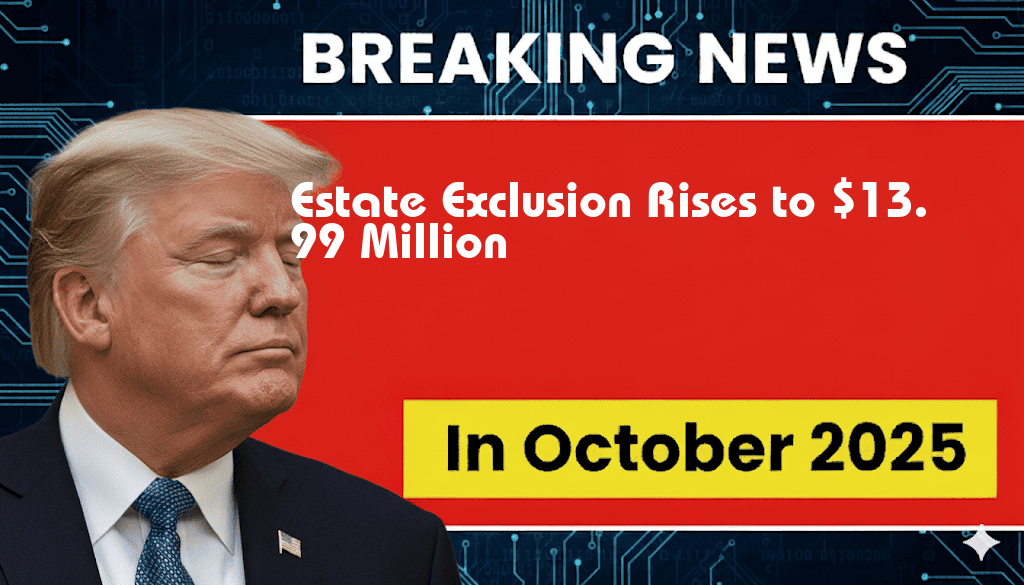Estate Exclusion Soars to $13.99 Million — Significant Benefits for Heirs
The federal estate exclusion limit has been dramatically increased to $13.99 million for the year 2023, a substantial rise from previous years. This change presents a significant opportunity for high-net-worth individuals and their heirs, allowing them to transfer wealth without incurring federal estate taxes. The increase, driven by inflation adjustments and legislative changes, is expected to benefit families navigating the complexities of estate planning. With this new limit, individuals can pass on their wealth to beneficiaries with greater ease, potentially reducing the financial burden on their heirs.
Understanding the Estate Exclusion Limit
The estate exclusion limit is the total value of assets that an individual can transfer tax-free upon death. This limit applies to all forms of property, including real estate, investments, and personal belongings. The change to $13.99 million means that individuals can now leave a larger estate to their heirs without incurring taxes at the federal level, which currently stands at a rate of 40% on estates exceeding this threshold.
Implications for Estate Planning
The increase in the estate exclusion limit carries significant implications for estate planning strategies. Here are some key points to consider:
- Wealth Preservation: High-net-worth individuals can now preserve more wealth for their heirs, allowing families to maintain their financial legacies.
- Tax-Free Transfers: With the exclusion limit raised, estates valued below $13.99 million will not face federal estate taxes, simplifying the transfer process.
- Strategic Gifting: Individuals may choose to gift portions of their estate to heirs while they are still living, taking advantage of the higher exclusion limit.
- Increased Flexibility: The rise in the exclusion limit provides families with more options in terms of asset distribution and planning for future generations.
Historical Context of the Estate Exclusion Limit
The estate exclusion limit has seen significant fluctuations over the past two decades. Here’s a brief overview of how it has evolved:
| Year | Exclusion Limit |
|---|---|
| 2010 | $5 million |
| 2011 | $5 million |
| 2012 | $5.12 million |
| 2017 | $5.49 million |
| 2021 | $11.7 million |
| 2023 | $13.99 million |
Who Will Benefit the Most?
The primary beneficiaries of this increase are wealthy individuals and families with estates that approach or exceed the new exclusion limit. However, the broader implications extend to financial advisors, estate planners, and tax professionals, who will need to adjust their strategies to accommodate clients’ evolving needs. Middle-class families may also find advantages in estate planning tools that leverage the new exclusion limit, such as trusts and other financial instruments.
Looking Ahead: Potential Changes in Legislation
While the increase to $13.99 million is currently in effect, future legislative changes could alter this landscape. There have been discussions in Congress regarding potential adjustments to estate tax laws, which could impact both the exclusion limit and tax rates in the coming years. Individuals are encouraged to stay informed about any proposed changes that may affect their estate planning strategies.
Conclusion
The soaring estate exclusion limit to $13.99 million in 2023 marks a pivotal moment for estate planning in the United States. For more information on estate planning strategies and updates on tax laws, visit Forbes and Wikipedia.
Frequently Asked Questions
What is the new estate exclusion limit for 2023?
The new estate exclusion limit for 2023 has increased to $13.99 million, allowing individuals to pass on this amount to heirs without incurring federal estate taxes.
How does the increased estate exclusion benefit heirs?
The increased estate exclusion allows heirs to receive a larger inheritance without facing federal estate taxes, thereby maximizing the wealth passed on to them.
Will the estate exclusion limit continue to change in the future?
While the estate exclusion limit can change, it is typically adjusted for inflation, so it may increase further in the coming years.
Who qualifies for the estate exclusion?
Any individual can qualify for the estate exclusion as long as their estate’s value does not exceed the $13.99 million threshold at the time of their passing.
What should individuals consider when planning their estates with the new exclusion limit?
Individuals should consider consulting with a financial advisor or estate planning attorney to effectively utilize the estate exclusion and ensure their assets are distributed according to their wishes.

Leave a Reply